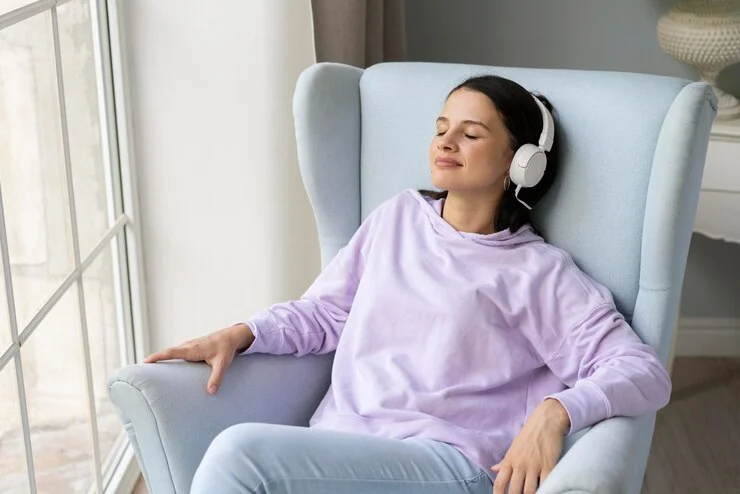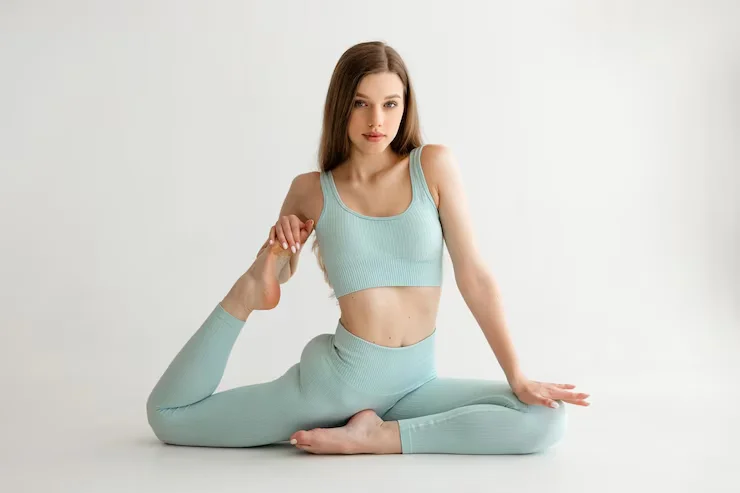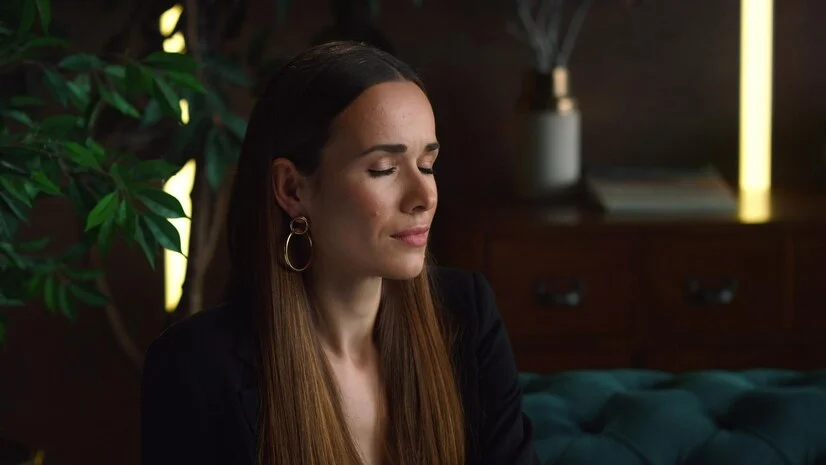9 Must-Know Techniques I Use to Calm Down Fast
We all have those moments when our anxiety ramps up, our nerves feel frayed, and we need to regain a sense of calm. As someone who struggles with occasional anxiety, I’ve learned the hard way that allowing myself to remain in that tense, stressed state can take a real toll, both mentally and physically. So over the years I’ve experimented with countless techniques to actively calm myself down in the heat of the moment. What works like a charm for me may differ from what resonates for you, but there are some broadly effective ways to tap into a relaxation response fast. Here are my personal top 9 methods to calm myself down instantly when I feel my stress levels rising.
1. I Stop and Take Some Deep Belly Breaths
This might sound overly simple, but taking a few minutes to focus on your breath is one of the easiest yet most powerful ways to activate your relaxation response.
Here is my personal process when I do deep breathing to calm down:
- Find a comfortable position, close your eyes, and place one hand on your belly.
- Inhale slowly through your nose, feeling your breath fill your abdomen. Count slowly to five as you breathe in.
- Exhale slowly out through your mouth, deflating your belly. Count to five again.
- Repeat this cycle four to five times, keeping your attention focused only on your breath.
I find doing this with closed eyes, picturing a calming scene like waves lapping on a beach with each inhale and exhale, stops my buzzing thoughts and centers me in the present moment. After a few of these mindful belly breaths, I feel notably less frenzied and more grounded.
2. Isolating Muscle Groups in Progressively Relaxation Melt Away Tension
Another favorite trick up my sleeve for calming down is progressive muscle relaxation (PMR). The premise is simple – you systematically tense, hold, and then relax different muscle groups within your body. This allows you to isolate and release excess tension that accumulates when you’re stressed.
My sequence moves from my toes to my forehead:
- Curl your toes, tense feet, relax
- Tighten shins and calves, relax
- Squeeze thigh and buttock muscles, relax
- Clench stomach muscles, relax
- Hunch shoulders toward ears, relax
- Scrunch facial muscles, relax
- Raise eyebrows toward hairline, relax
I set aside 10 minutes when I was first learning this technique, but now I can scan my body for tension pockets and release them swiftly. Ending with full-body relaxation leaves me feeling like melted butter, which is fantastic for soothing frazzled nerves.
3. I Pop in Earbuds and Listen to Calming Music
Another pleasurable way for me to tap into a calm state fast is listening to serene music for 5-10 minutes. Instrumentals like light piano or guitar music work well. Rain or ocean wave sounds can also transport me to a tranquil headspace.
Benefits I’ve personally experienced from calming music include:
- Slowing down my heart rate and easing shallow “stress” breaths
- Distracting myself from repetitive worrying thoughts
- Encouraging happier hormone production like serotonin
- Enabling me to close my eyes and imagine myself in a peaceful scene
Tuning into even just one pleasant song provides an instant mental vacation – almost like a mini-meditation. As little as 5 minutes can reboot my systems so I return to the chaos of life feeling cooler, calmer, and collected.
4. Sipping Herbal Tea Mindfully is Soothing
There’s nothing quite like clutching a steamy mug of fragrant chamomile or lavender tea to ease your worries. Beyond the comfort of consuming something warm, herbal teas contain compounds like apigenin, linalool, and l-theanine which help encourage relaxation on a physiological level.
Here is my favorite calming herbal tea recipe that I mix up in 10 minutes flat using ingredients I always have at home:
Soothing Herbal Stress Relief Tea
- 1 Tbsp fresh or 1 tsp dried chamomile flowers
- 1 Tbsp fresh or 1 tsp dried mint leaves
- 1 whole sliced lemon
- 1 tsp honey (optional)
Place herbs in a mug and pour over boiling water. Add lemon wedge. Allow to steep for 5-10 minutes before straining into your favorite teacup. Stir in honey if desired.
Savor this aromatic tea in a quiet spot. As you slowly sip, close your eyes and focus on the lemony mint flavor with sweet floral notes. Feel tensions slipping away with each taste…aaaahhh.
Truthfully though, even a basic store-bought teabag steeped mindfully hits the relaxation spot for me in a pinch!
5. Splashing Warm Water on My Face Offers an Instant Reset
When I need rapid relief from stress buildup, I sometimes intuitively find myself turning to water for a reset. Splashing your face with warm water triggers physiological responses which can short-circuit anxiety. The gentle heat immediately starts soothing delicate facial nerves. Taking slow deep breaths as you gently pat your skin dry with a fluffy towel encourages mindfulness.
I think of the water as washing negative emotions down the drain so I emerge refreshed. Focusing on the sensory details – the warmth, moisture, soft towel – brings me into the present. This quick 20-second ritual provides an anchoring, familiar comfort that makes me feel cared for, which is very settling.
6. Guided Imagery Meditations Transport Me to Happy Places
One of my favorite rapid relaxation tricks is listening to recorded guided imagery meditations. These prompt you to visualize beautiful nature scenes rich in engaging sensory details. I simply slip on headphones, close my eyes, and let a soothing voice lead me through a vivid imagined walk along a beach, float down a river, or exploration of a magical forest.
What I love about guided imagery for anxiety relief are:
- [✓] Takes under 10 minutes for mini-escape
- [✓] Encourages positive imagination to replace worries
- [✓] Fosters gratitude and perspective
- [✓] Visualization has physical calming effects
Afterward, colors seem brighter and stresses are lighter. I feel re-centered like waking up from a pleasant dream.
7. Gentle Yoga Poses Release Physical and Mental Tension
When anxiety has me wound up extra tight, doing some gentle yoga flows provides an accessible way to encourage relaxation quickly. These aren’t complicated contortion poses – think simple neck rolls, shoulder shrugs, torso twists, toe touches etc. Movement helps interrupt obsessive thinking patterns while releasing physical tension. Matching breath to movement has meditative effects.
Here are two favorite calming poses I often turn to:
1. Child’s Pose: Kneel with toes together and knees wide apart. Exhale as you lower your chest between your knees, head towards the floor. Reach arms extended or stacked under forehead. Breathe deeply for 30 seconds feeling the spine lengthen.
2. Standing Forward Bend: Feet at hip width, inhale reaching arms overhead, exhale hinging at hips to fold forward and dangle arms. Bend knees as needed to relax head/neck. Breathe here for 10 full cycles.
These gentle stretches alone help relax my entire nervous system within minutes by shifting my physiological state. When combined with deep breathing, I reset quickly.
8. Walking Briskly in Nature Soothes My Soul
If you’re craving both movement and mental escape during turbulent times, briskly walking outdoors is my #1 emergency stress relief recommendation (weather permitting based on your climate).
Just 10 minutes strolling where surrounded by natural elements like fresh air, greenery, and sunlight can work wonders for clearing your head. I feel my frustrations dissolve as endorphins release while almost meditatively focusing on the physical sensations. Negative ruminations fade away organically without effort while embracing natural beauty. I return home more centered, hopeful, and solution-focused.
Pro Tip: Avoid direct sun exposure during peak UV intensity times. Stay hydrated and don’t overdo pace or distance without proper preparation.
9. Venting My Worries to a Patient Friend Defuses Bombs
When I’m alone and spiraling internally with anxiety, one of the best instant relief solutions is to call, text, or video chat a trusted friend. Even just blurting “Having a panic attack, help distract me!” signals to caring buddies that I urgently need support.
Tactics my friends have successfully used to help calm me down fast over the years include:
- Patiently listening without judgment
- Asking thoughtful questions
- Validating my emotions with empathy
- Suggesting specific solutions if directly asked
- Recommending professional support if warranted
- Offering optimistic perspectives from past crises
- Sharing uplifting jokes or funny images
Ten minutes of supportive social connection and stress venting helps release the unbearable inner pressure valve, so I can think clearly again without that acute emotional intensity fogging my brain. Tactful friends don’t even have to fully understand the content details giving me anxiety. Just demonstrating active listening care while I verbally process eases my anguish immensely, nearly like magic.
In my early 20s, I struggled immensely with effective ways to rapidly self-soothe anxiety before it spiraled out of control. Now approaching 40, I’ve learned through trial-and-error which techniques truly deliver quick stress relief results tailored to my personality and needs. I hope my journey inspires you to get to know your own unique rapid relaxation superpowers during turbulent times. Prioritizing self-care isn’t selfish – it allows you to then fully show up as your best self for others who need you.
The key is experimenting with a diverse self-soothing skillset when you’re in a calm frame of mind, so you intuitively know how to tap into that inner well of resilience when a crisis hits. Which rapid relaxation techniques resonate most with your spirit? Wishing you clarity in the year ahead so you can move through challenges centered in peace and possibility. Breathe easy, friend.
People Also Ask:
Q: What are 5 minute stress relievers?
A: Some favorite 5 minute stress relievers are deep breathing, music listening, short guided meditation, drinking herbal tea mindfully, taking a brisk walk, or venting to a friend.
Q: Is it possible to instantly calm down?
A: Yes, with the techniques like deep breathing, music, social support, and guided imagery, it is absolutely possible to tap into a physiologically relaxed state even if feeling intensely anxious or in a panic attack in the moment. Relief may feel instantaneous.
Q: Why do I cry when I’m angry?
A: Crying when angry or frustrated is a natural stress response when emotions overwhelm our coping resources. Tear production releases hormones that relax the body rapidly. There’s no shame in stress crying.
Q: How can I relax my mind instantly?
A: The fastest ways to relax your mind include deep breathing which activates the relaxation response, listening to peaceful music which eases mental chatter, guided meditation which distracts worrying thoughts, moderate exercise which boosts feel-good endorphins, or reaching out to a supportive friend for venting.

